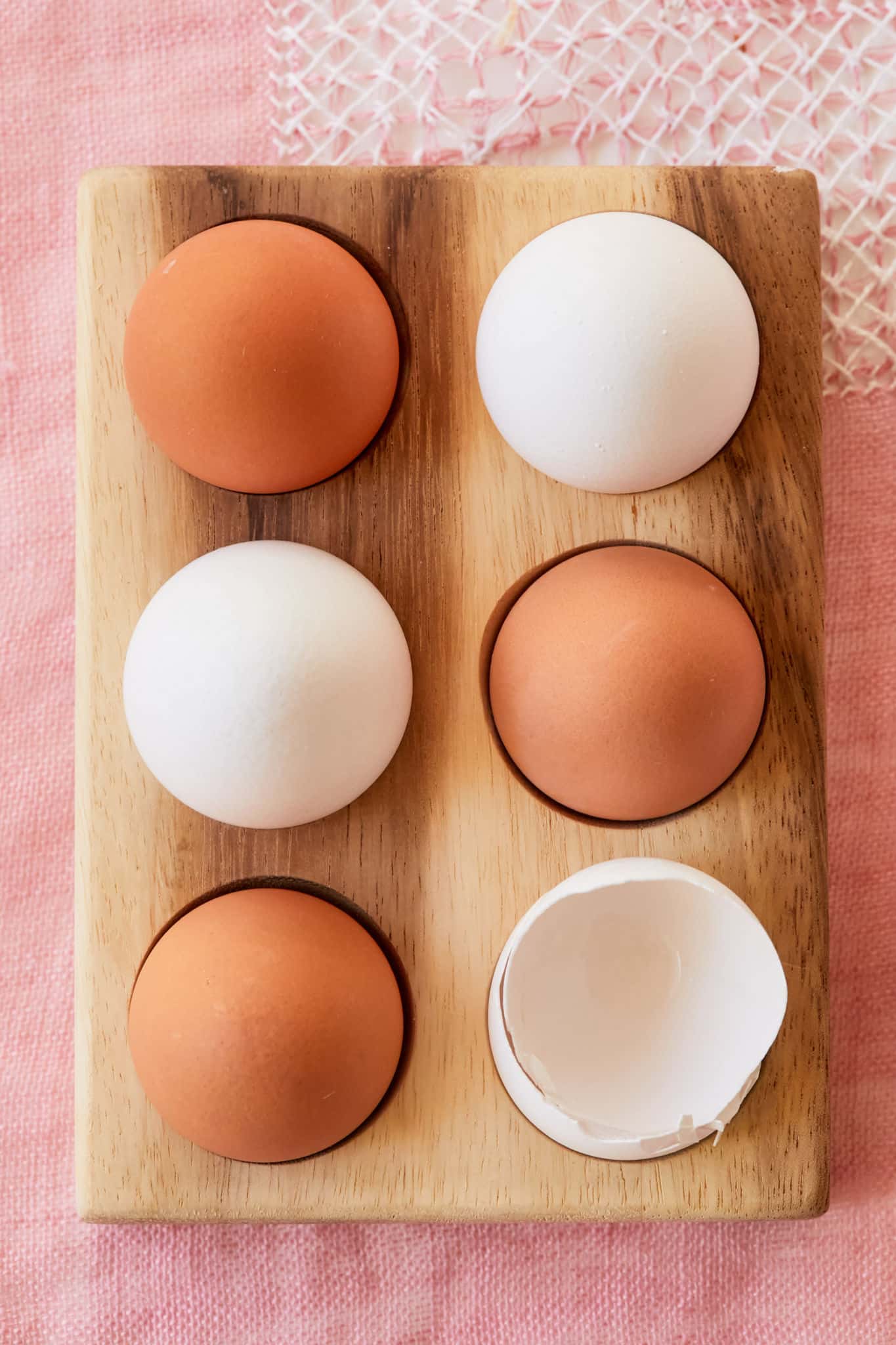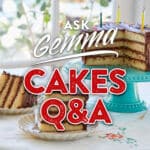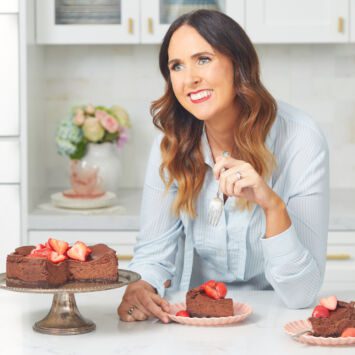
This post may contain affiliate links. Please see my full disclosure for details.
Hi Bold Bakers!
I’m pretty sure we’ve all run into a situation where a recipe calls for a large egg, and we aren’t sure what that really means. What constitutes a large egg? Is it based on its weight or how it compares to the size of your hand? What if you’re in a different country and a large egg in the US is an extra-large egg in another?
It can be frustrating when you don’t know whether your egg will fit a recipe. While different-sized eggs can be more of a nuisance than a benefit when baking, look at it on the bright side. Bigger Bolder Baking is made up of all you Bold Bakers who come from different places, and that inevitably means different-sized eggs – it’s all about working with what you have and being flexible!
There are so many factors that can contribute to different egg sizes, but don’t worry – we’ve you covered! Since one of the biggest questions we receive in the comments is which eggs to use and their exact measurements, we’ve decided to create this Complete Guide to Different Egg Sizes. Best of all, we’ve included a FREE egg measurement chart for your convenience!

Why Are There Different Egg Sizes?
According to Nellie’s Free Range, eggs come in all shapes and sizes, but depending on the following factors, they may vary:
- Hen age: Young hens tend to lay smaller eggs at the beginning of their laying. In their prime, they typically lay medium to large-sized eggs.
- Hen breed: Generally, larger hens lay large eggs, but some hens are bred to lay large eggs. Fun Fact: Breeds such as Minorca and Leghorn are known to lay jumbo-sized white eggs!
- Time of year: During colder seasons, hens usually lay smaller eggs, as their production naturally slows.
How Eggs Are Classified
Egg sizes are usually determined based on their weight class from smallest to largest: Peewee, Small, Medium, Large, Extra Large, and Jumbo. However, these sizes can vary from country to country. Here is a handy Egg Weight by Size (In the Shell) Chart that spans various countries and size classifications.

Don’t worry if you don’t see your country’s egg measurements on the chart. If this is the case, you can simply take out a kitchen scale and weigh your eggs. All of the eggs used in our recipes are from the US, so if the recipe calls for a large egg, find an egg that’s around the same weight!
How To Best Weigh Your Eggs
Eggs are composed of three main components: the clear white albumen (approximately 60% of total weight of the egg), the yellow yolk (approximately 30%), and the shell (approximately 10%).
The egg weights in the chart above include the weight of the shell. Therefore, you can weigh your eggs just as they are in the shell. However, if you’re interested in seeing egg weights without the shell, feel free to press on the links to your country’s egg measurements to learn more. I highly recommend using a kitchen scale for the most accurate measurements of your eggs.
Place a bowl on top of your kitchen scale, and tare it or zero out the weight. Then, add your egg to weigh. Most kitchen scales can weigh in both grams and ounces, but if you don’t have an option in grams, use this converter.

Using The Wrong Egg Size
Yes! Egg size changes the taste and texture of your baked goods since it alters the liquid measurements in your recipes.
If you use too much egg in a recipe, your baked goods can turn out too spongy and rubbery, whereas if you use too little, then your baked goods will become dense and crumbly. To ensure you don’t come across these issues, use the right egg size or get as close as you can to the required weight.
Do Egg Measurements Need To Be Exactly What The Recipe Requires?
While it’s important to use the right-sized egg, you can’t always achieve the exact weight even if you wanted to. The eggs Gemma uses aren’t always the same weight and size each time. As long as you choose eggs that are within the weight range, the results should be the same. No need to worry about getting it down to the last detail!
More Egg Tips & Tricks
- How Long Do You Whip Egg Whites?
- How to Get Room Temperature Eggs
- Is It Safe To Eat Raw Eggs? Facts & Myths
- How To Separate Eggs
- How To Remove Egg Shells From Eggs
- How You Tell An Egg is Fresh
- 7 Best Egg Substitutes For Baking Recipes & How to Use Them
- The Complete Guide to Aquafaba, A Surprising Vegan Egg Substitute

Try Out These Delicious Egg Recipes
- The Creamiest Homemade Eggnog
- Southern Egg Custard Pie
- Rompope (Mexican Eggnog)
- Microwave Egg MugMuffin
Want To Go Deeper?
Level up your baking skills even further and subscribe to the Bold Baking Academy today! You’ll get access to all the in-depth baking courses both past and present, access to the Bold Baking Academy Community, and the one-of-a-kind Baking Concierge — which is a fast & direct connection to me and my team of culinary experts to answer any baking question you might have.
That’s right, inside or out of the Academy! So subscribe now!








This so brilliant… I’m in Egypt most of the time and they sell eggs …. No sizing so until now I had no idea if I was near to a large egg or not.. thank u